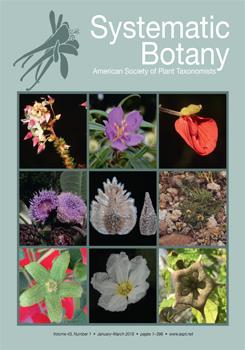Molecular data confirm monophyly of the Tetramerium lineage (Acanthaceae, Justicieae), a group of nearly 200 species, ca. 75% from the New World (NW) and the remainder from Asia or Africa. Compared to our earlier work, . 50% more in-group taxa were sampled (nearly 2/3 of known taxa now sampled) and added ∼20% more sequence data. We time-calibrate the phylogeny using primary fossil evidence and the larger context of a calibrated phylogeny for Acanthaceae. Many aspects of relationship are strongly supported but uncertainty remains about a number of phylogenetically isolated taxa (e.g. African Angkalanthus, Chorisochora; NWAncistranthus) and some aspects of relationships among clades remain weakly supported. The group originated in the Old World (OW) and began diversifying about 11.5 Ma. A single dispersal event to the NW occurred about 8.3 Ma, likely from Africa to southwestern North America. Anumber ofmajor clades, particularly in the NW, are less than 5Ma old and species in many clades are substantially younger. Several NW clades, even those with < 10 species, comprise species that are markedly heterogeneous in floral traits likely reflecting selection by pollinators. Many NW genera are not monophyletic, which is not surprising given that floral traits have been relied upon taxonomically. Diversification rate analysis revealed no significant shifts resulting in a gradual increase in number of lineages with time. The Tetramerium lineage is now phylogenetically well characterized but remains enigmatic from the perspective of morphological evidence for many aspects of relationships. The lineage is usefully thought of as a ‘clade complex’: as a species complex is of morphologically confusing species, a ‘clade complex’ is of clades that are not well characterized morphologically.
How to translate text using browser tools
18 April 2018
The Tetramerium Lineage (Acanthaceae, Justicieae) Revisited: Phylogenetic Relationships Reveal Polyphyly of Many New World Genera Accompanied by Rampant Evolution of Floral Morphology
Lucinda A. McDade,
Thomas F. Daniel,
Carrie A. Kiel
ACCESS THE FULL ARTICLE

Systematic Botany
Vol. 43 • No. 1
Jan-Mar 2018
Vol. 43 • No. 1
Jan-Mar 2018
biogeography
diversification
systematics




